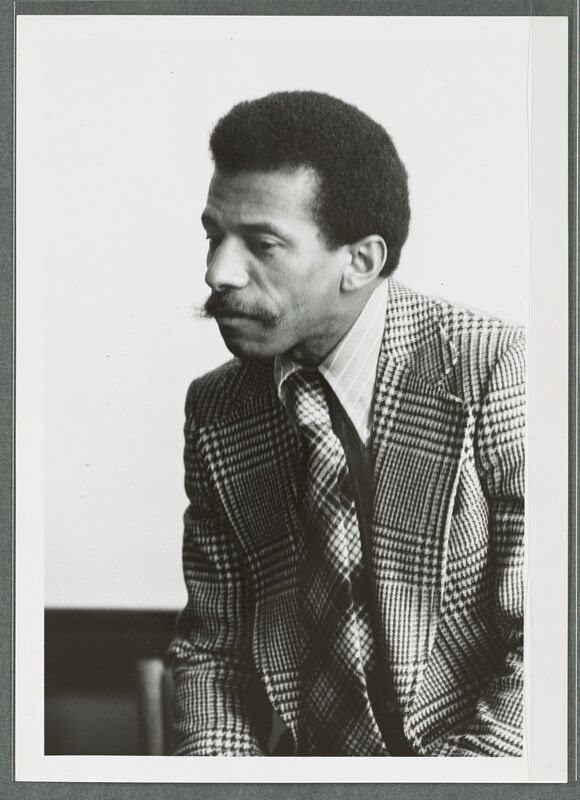Administrative Differences: Interactions with Kemeny and McLaughlin
“My career at Dartmouth College falls into two parts. I was hired by John Kemeny when he was president. I was forced out by David McLaughlin who succeeded him, John Kemeny. David McLaughlin was president of Dartmouth College after John Kemeny. John Kemeny and I got along fine; David McLaughlin and I did not get along at all. And so I left."—Rev. Warner Traynham, 2022
Unique Responsibility of the Dean of the Tucker Foundation
When talking about his return to Dartmouth, Traynham mentioned how he never learned how the administration picked him for the role of dean of the Tucker Foundation. He remembers Professor Donald L. Kreider’s visit to his house in Boston, where he was living at the time while working at Harvard. After asking what the foundation was, Kreider responded, saying "Warner, the Tucker Foundation is whatever the Dean of the Tucker Foundation says it is."
Officially, the Tucker Foundation’s mission was centered on the moral and spiritual life and influence of the College. Prior to Traynham’s tenure, the foundation’s work consisted of a lot of service opportunities that took place off campus. Traynham talked about them as such: “Dartmouth students were sent to the inner city to learn about the inner city, because most of them were suburbanites or were assumed to be, and didn't know anything about what [Dean Charles Dye ’52] called the ‘Other America.’ What he's talking about is Black people and Native Americans.” However, Traynham wanted to focus his efforts more on the foundation’s impact on campus life. He acknowledged that, “when [he] came, the world had changed somewhat from when Doc Dye was there, and students were more focused on campus and less focused on the world outside campus.”
One of the ways he sought to impact campus life was to support student campaigns, including those that directly opposed the decisions of other members of administration. One such campaign occurred in response to the Board of Trustee’s decision to begin admitting women into the College in 1972, but at a much smaller rate than men. Traynham spoke of students coming to him and complaining about the subsequent male-to-female student ratio of about 3-to-1, so he joined in their protests.
“At one point, because students fielded demonstrations, I was in the demonstration outside the office of John Kemeny. John Kemeny looked out and he saw me among the students, and he said, ‘Oh, what are you doing here Warner.' And I said, 'I'm demonstrating with the students.' We had a conversation subsequently, as you may imagine, and he said he didn't remember my letting him know that I didn't think much of this ratio. I said, ‘Well, I did. And even if you don't remember me saying it before, you now know, that that is my position and my opinion.’ And John Kemeny said, ‘I understand, and that is your right because the charge of the Tucker Foundation is to be concerned with something different from what the trustees are dealing with."—Rev. Warner Traynham, 2022
Throughout our conversation, Traynham spoke very highly of President Kemeny. He spoke of how he felt that Kemeny truly understood the foundation’s role and his role as dean. He acknowledged that Kemeny believed that the administration should follow all of the trustees' decisions, but he also respected the exception that Kemeny made to that belief: all members of administration “except for the chaplain and Dean of the Tucker Foundation.”
Therefore, Traynham felt that Kemeny understood his position and his mission. He trusted Traynham to make the right decisions to support the student body. On the other hand, Traynham believed that President McLaughlin, Kemeny’s successor, did not understand the purpose of the Tucker Foundation, and thus, did not support Traynham in his role as dean.
Additionally, Kemeny and McLaughlin apparently had very different reputations. While Traynham said that he and other Dartmouth faculty and staff viewed Kemeny as extremely smart and skilled as an administrator, McLaughlin was viewed adversely, as an “intellectual lightweight.”
Traynham described McLaughlin's decisionmaking process as one based on distrust. He would overturn other deans' decisions, thus overstepping the role of his office and undermining the expertise of the bright members of his administration. Additionally though, he was easy to get on your side—as long as your timing was right. “They used to say that if three people go in to see McLaughlin, and each one of them persuades him of their perspective, the last person to see him is the one who will get his perspective implemented," Traynham said.
In regards to the Tucker Foundation specifically, Traynham said that McLaughin "thought that the business of the president was to determine what the Tucker Foundation should do, and he didn't like the idea of the dean of the Tucker Foundation taking positions with respect to moral questions," even going as far as to write Traynham a memo saying that he should do more of what faculty members do. Traynham says that McLaughlin also cut the already small budget of the foundation and tried to rework it to his own liking.

